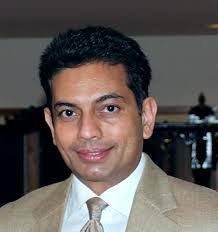With over $20 Billion in federal stimulus funds made available for healthcare professionals to transition to electronic health records – many believe this will set the stage to significantly increase the bottom line. It won’t. Becoming compliant and meeting ACA regs is only the first step but paying attention to all operations and efficiently running the front office, middle office and back-office while improving patient care will all be necessary.
As a provider of healthcare IT specializing in EHR and practice management for specialty practices, we have learned that profitability can only be achieved when the practice is working in-sync with itself. Not only does the right hand have to know what the left hand is doing but every finger needs to be intertwined too. Below are the key areas every healthcare practice must focus on and coordinate in order to gain growth in patient confidence and the bottom line.
1. Know your codes and negotiate the most appropriate reimbursement rates
Proper rate negotiation happens when the office has transparent data for payers to look and see the pattern of correct charges and improved patient care. One of the ways to effectively demonstrate improved patient care is by managing patients with chronic ailments by implementing a Chronic Patient Management Program (CPMP). We know the top seven chronic conditions, which deplete the vast majority of payer payments, are Congestive heart failure (CHF), Chronic obstructive pulmonary disease, Diabetes, Cardiovascular disease, End stage renal disease, peripheral vascular disease, and multi system disorders . By implementing an effective CPMP, practices are able to remind patients on a regular basis about medication compliance, key indicators for management of their chronic diseases (E.g. Blood sugar for Diabetics, etc.), and follow-up appointments. For aforementioned compliance, an EMR which is offering these functions is mandatory. Once the patient is compliant, the vast majority of costs including, hospitalization can be controlled.
2. Maintain financial viability through an effective EHR program
Believe it or not, every practice can do this by charging appropriately for all services. While this should be obvious, it isn’t and here’s why. Too many providers tend to under-code to avoid audits. A good EMR should document an encounter at a very granular level and document all required procedure(s), resulting in correct charges that will eliminate audits. Getting paid on time is the second most important way to stay financially viable, and third is controlling the cost of the practice. A good EMR system with integrated Medical billing software can help tremendously.
3. Identify the 4 areas of practice to keep them integrated for optimal efficiency.
If we breakdown the 4 areas of every healthcare practice, they would be patients, front office, middle office, and back office. Here are the ways to keep them flowing.
Patient communications: A patient portal that offers online payments, appointment scheduling, and patient education can manage patients effectively. This can all be offered by an efficient;
Front operations: Every practice needs to have an efficient scheduling system to do two things: manage no-shows using appointment reminders and improved screening for eligibility of patients through pre-authorization of any procedure;
The Middle: Providers (Physician, Nurse, Nurse Practitioner and Physician Assistant etc.) must use effective EMR software to capture detailed patient notes with ontology capability. The key is to be efficient with speed. i.e. Clinical Charting under 120 seconds is mandatory;
Back billing: Granular charge capture of every EMR encounter ensures audit free billing. An efficient EMR will help practices effortlessly deal with all referring providers, hospitals, payers, labs, pharmacies, compliance body and other partners.
Ultimately, all of the above with a smart investment in an efficient software system will improve healthcare practice efficiency, reduce errors and control costs.
Divan Dave, CEO of OmniMD www.OmniMD.com a ground-breaking leader in Electronic Health Records (EHR) software providing certified, specialty-specific EHR solutions to automate the workflow by providing a comprehensive and quick data-capturing system, based on an ontology platform using customizable data analytics and reporting. He can be reached at [email protected].
Throughout the year, our writers feature fresh, in-depth, and relevant information for our audience of 40,000+ healthcare leaders and professionals. As a healthcare business publication, we cover and cherish our relationship with the entire health care industry including administrators, nurses, physicians, physical therapists, pharmacists, and more. We cover a broad spectrum from hospitals to medical offices to outpatient services to eye surgery centers to university settings. We focus on rehabilitation, nursing homes, home care, hospice as well as men’s health, women’s heath, and pediatrics.








